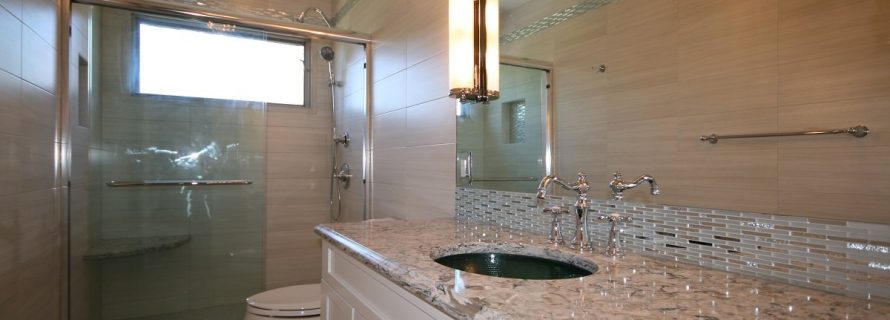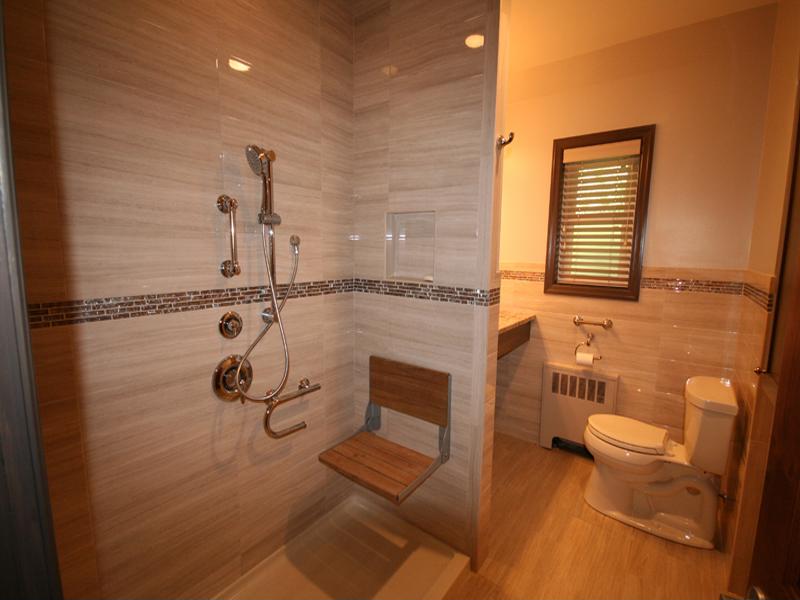Remodeling homes for better mobility

The layout of a home should be made with the convenience and comfort of its residents in mind. Sometimes, however, life events can change what is convenient or accessible in the home. Families that have members who use mobility devices, or families that take in older relatives as they age, may need to consider making some changes across the house to help make its amenities easier to use for everyone.
While there are many large modifications that can be made to improve home access, it’s better to start with a few key areas. Essential functions, like the ability to get into the shower or prepare a meal, should take planning priority.
In the kitchen
Kitchens can be hard rooms to properly navigate for people who need assistance getting around. For family members who use wheelchairs or motorized chairs, it can be hard to get close enough to counters to use them or to reach into higher shelves.
To make these elements of the kitchen easier to use, homeowners can make some surface adjustments. While private homes are not held to the same legal requirements as public areas, homeowners could still use the accessibility standards from the American’s with Disabilities Act to find ways to improve mobility options around the house.
“Switch out small knobs for D-handles on drawers and cabinet doors.”
Adding roll-under sinks and countertops can make it easier for all family members to access these features – following the ADA guidelines would mean sink surfaces should not be higher than 34 inches from the ground. Keeping sinks shallow – about 6 inches deep – will also make them easier to use. Features like touchless faucets or retractable sprayer attachments make kitchen sinks more accessible for people who have trouble standing or limited use of their hands.
If most of the cabinets in the home are tall or reach from the ceiling, it would be a good idea to build more floor-level cabinets or add a portable kitchen cart or storage island. Keep frequently-needed appliances in these more accessible locations so that everyone can always reach what they need. Switch out small knobs for D-handles on drawers and cabinet doors to make them easier to pull, which will be beneficial to older family members who have arthritis or other conditions that affect their grip.
Pull-out shelves are other great additions around the kitchen to improve access. Eliminating the need for everyone to constantly reach will make it easier to find important items without extra physical stress.
In the bathroom
Bathrooms are major focus areas for improving mobility access. The first thing renovators should consider when modifying their bathroom spaces is room location. Having a full bath on the first floor of the home will make it significantly more accessible for people who have a harder time getting up the stairs.
Showers need to be easy for everyone in the house to get in and out of. Showers that are combined with bathtubs or that have high ledges can make it easier for a person to trip trying to get in, or be completely impossible for a mobility device to get into.
Install a shower or walk-in bathtub that is level with the floor. Where mobility devices are involved, the shower needs to have a wide enough entrance and the space for someone to turn around inside. If the home has older family members who do not use a mobility tool in the shower, no-slip bathmats should be added to help them keep their balance. Showers can also include a chair or a ledge for sitting on so that people don’t need to stand for long periods. Grab bars in the shower, as well as detachable shower heads, will make it easier for people to get around inside the shower as well.
Make sure that shelving inside the shower is low so that soap and shampoo can be stored within easy reach.
When replacing toilets, adding ones that are raised or sit higher will be easier for people to get onto. They should be installed adjacent to a wall so that sturdy grab bars can be installed to assist with sitting down and standing back up. As a safety measure, add a phone or alarm near the toilet and the shower so that if so that if people fall, they can call for help.

In all rooms
It’s important to make sure there is plenty of open space in all of the rooms of the house. Keep pathways big enough for a wheelchair to pass through and make turns, and keep things off the floor that an elderly family member could trip on. Seniors are more likely to have strength and balance problems as they age, which makes it easier for them to lose their balance and harder to catch themselves if they start to fall. Seniors are also more prone to serious injuries if they fall, the result of decreased muscle mass and bone density. Be sure doorways are wide enough to accommodate the mobile devices and walkers without scraped knuckles.
Staircases should all have sturdy railings that can support all of a person’s weight. Even small points of elevation change, like a single step that leads from one room to another, should have something for a person to hold onto for support.
- Additions and New Construction
- All Exteriors
- Alterations
- Basements
- Bathrooms
- Customer Service
- Customer Stories
- Decks
- Design & Planning Show
- DIY
- Doors
- Educational Resources
- Extreme Makeover Home Edition
- Fashion Show
- General Remodeling
- Green Living
- Handyman Home Services
- Home Decor
- Home Entertainment
- Home Improvement
- Home Improvements
- How to Tips
- In The Community
- Kitchens
- Off-the-Wall Remodeling Stories
- Remodeling
- Resources
- Roofing
- Siding
- Social Media
- Sunrooms
- Tips & Tricks
- Trends
- Windows

